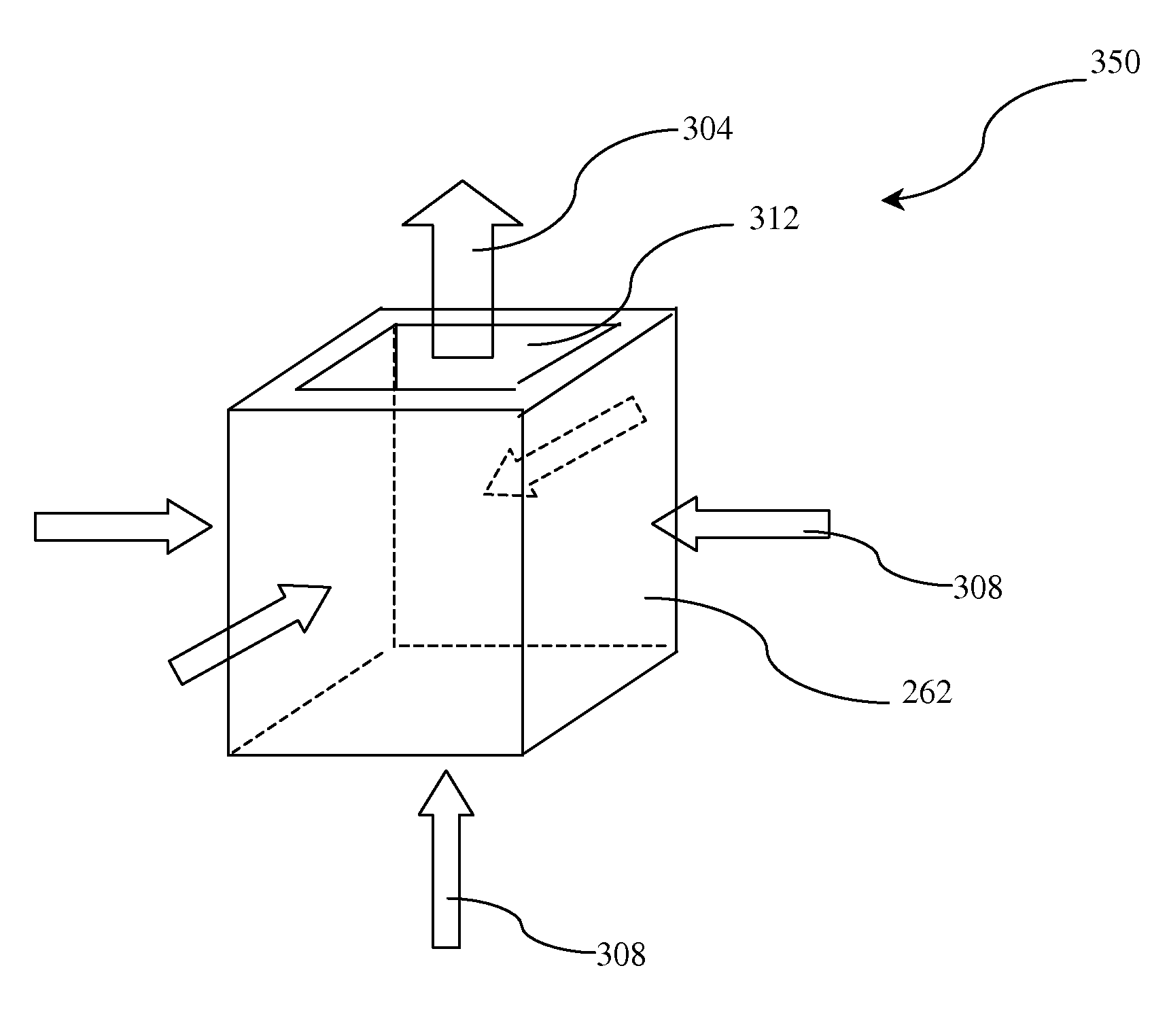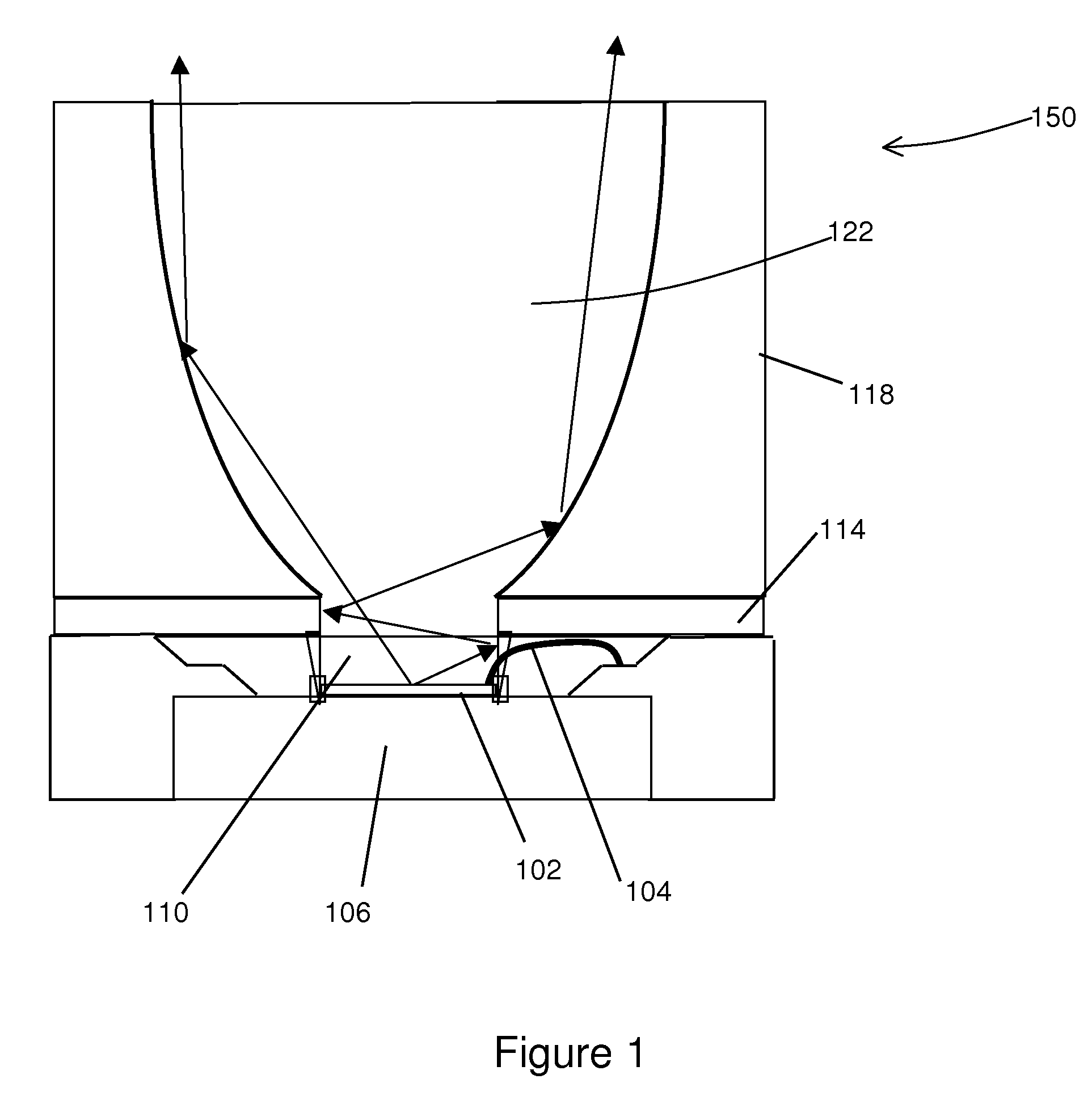Brightness enhancement with directional wavelength conversion
a technology of directional wavelength conversion and brightness enhancement, which is applied in the field of illumination systems, can solve the problems of reducing the wavelength conversion efficiency of standard led arrays, unable to provide sufficient brightness, and even damage, and achieves the effect of efficient light collection and higher light brightness
- Summary
- Abstract
- Description
- Claims
- Application Information
AI Technical Summary
Benefits of technology
Problems solved by technology
Method used
Image
Examples
Embodiment Construction
[0023]FIG. 1 illustrates one embodiment of the invention which uses a light coupler for efficient colleting and collimating of light from a light source such as an LED. The LED chip 102 sits on a heat sink 106 and is covered by a transparent material 110 and emits a light of a first wavelength range. The LED 102 is driven by electrical current supplied by bonding wires 104. The light coupler has one portion which is a light tunnel 114 and another portion which has a compound parabolic reflective surface 118. The compound parabolic portion 118 is formed by molded solid transparent part. The reflection surface of the coupler has a high reflectivity (greater than 80%) for the first wavelength. The reflective surface can be coated with metal (such as Al or silver) or multi-layer dielectric coating, or the combination of both. To further improve the light escaping efficiency, the space enclosed by the light coupler can be filled with a transparent material 122 with a refractive index mat...
PUM
 Login to View More
Login to View More Abstract
Description
Claims
Application Information
 Login to View More
Login to View More - R&D
- Intellectual Property
- Life Sciences
- Materials
- Tech Scout
- Unparalleled Data Quality
- Higher Quality Content
- 60% Fewer Hallucinations
Browse by: Latest US Patents, China's latest patents, Technical Efficacy Thesaurus, Application Domain, Technology Topic, Popular Technical Reports.
© 2025 PatSnap. All rights reserved.Legal|Privacy policy|Modern Slavery Act Transparency Statement|Sitemap|About US| Contact US: help@patsnap.com



